Best Compact Sliding Miter Saw
Best Cordless Compact Miter Saw Head To Head
For this installment of our “Head-to-Head” series, we took a look at compact cordless miter saws. These saws range from a tiny 6-1/2″ to 8-1/2″ with the majority falling into 7-1/4″. We’ve given these saws thorough testing, looking at a variety of criteria to help you decide which compact miter saw will work best for your needs.
Compact saws are a great option for small shops, homeowners, and carpenter’s with limited space. A compact sliding miter saw can have a horizontal cut capacity that rivals that of full size 12″ saws! Don’t be fooled by their size, these saws can hold their own and make most of the cuts that a professional needs to make on a regular basis. Between their impressive capacity, smaller size, and significantly lower weight these saws are definitely worth a look.
Best Compact Sliding Miter Saw Evaluation Format
Once again our team has put some serious time and effort into our Best Compact Cordless Miter Saw evaluation to bring you the most comprehensive information available. For this evaluation, we broke things into several categories including Precision & Accuracy, Performance (speed/power), Features, Ergonomics, Dust Collection, Decibels, and Price. For each of these categories, we will rank the saws, and in the end, we will name the Best Compact Cordless Miter Saw based on the combined results.
- Precision, and Accuracy – In this category, we evaluated the accuracy of the miter saws out of the box and how easy it is to make adjustments.
- Performance [Power / Speed Test] -We looked at cutting speed as an indicator of saw motor performance.
- Run-time – Lots of Pros think run-time is important. The performance evaluation took a very deep dive into the power of the saw motors and how well the saws managed repetitive cutting of framing lumber.
- Features – An overall comparison of features and specifications.
- Ergonomics – Ergonomics are really important to users and an important category to consider when purchasing any power tool. In addition to traditional ergonomics, we also included functionality in this category.
- Dust Collection – Construction is a messy business and dust is one of the biggest hazards in our industry.
- Decibels – We evaluated the sound level in decibels
- Price – Price is always an important factor in determining which saw is best for a user. We’ve included the current pricing found online for each of the saws “as-tested,” at the time of publication.
Compact Sliding Miter Saw Specifications
Below is a list of general specifications that relate to each saw
- Blade Size: 8-1/2″
- RPM: 4500
- Weight: 31.5 lb
- Max Angle Cut: 0-45 L/R
- Max Bevel Cut: 0-45 Left Only
- Vertical Capacity: 2-3/4″
- Horizontal Capacity: 10-5/8″
- Laser /Light: Laser
- Battery Voltage: 18V
- Battery Ah: 8.0 Ah
- Blade Size: 7-1/4″
- RPM: 3800
- Weight: 21 lb
- Max Angle Cut: 0-47 L/R
- Max Bevel Cut: 0-47 Left Only
- Vertical Capacity: 3-1/2″”
- Horizontal Capacity: 8″
- Laser /Light: Light
- Battery Voltage: 18v [20 volt max]
- Battery Ah: 4.0 Ah
- Blade Size: 7-1/4″
- RPM: 4100
- Weight: 31.6 lb
- Max Angle Cut: 0-48 L/R
- Max Bevel Cut: -1-46 Left
- Vertical Capacity: 3-1/2″”
- Horizontal Capacity: 8″
- Laser /Light: Light with Shadowline
- Battery Voltage: 18v [20 volt max]
- Battery Ah: 4.0 Ah
- Blade Size: 7-1/4″
- RPM: 5100
- Weight: 31 lb
- Max Angle Cut: 0-48 L/R
- Max Bevel Cut: 0-48 L
- Vertical Capacity: 2-1/4″
- Horizontal Capacity: 9-3/8″
- Laser /Light: Light
- Battery Voltage: 21.6V (24 volt max)
- Battery Ah: 6.0 Ah
- Blade Size: 7-1/4″
- RPM: 4000
- Weight: 34 lb
- Max Angle Cut: 0-45 L/R
- Max Bevel Cut: 0-47 L / 57 R
- Vertical Capacity: 3-1/3″
- Horizontal Capacity: 12-13/64″
- Laser /Light: Laser
- Battery Voltage: 36V
- Battery Ah: 2.5 Ah (at 36V)
- AC / DC capable with accessory
- Blade Size: 7-1/2″
- RPM: 5700
- Weight:
- Weight 28.9 lb
- Max Angle Cut: 0-47 Left and o-57 Right
- Max Bevel Cut: 0-45 Right and 0-5 Left
- Vertical Capacity: 2-1/16” x 11-3/4”
- Horizontal Capacity: 12-1/4″”
- Battery Voltage: 36V (running two 18V packs at same time)
- Battery Ah: 5.0 Ah
- Blade Size: 7-1/4″
- RPM: 5000
- Weight: 28 lb [w/ battery]
- Max Angle Cut: 0-45 L/R
- Max Bevel Cut: 0-48 L
- Vertical Capacity: 3-1/2″
- Horizontal Capacity: 8″
- Laser /Light: Light
- Battery Voltage: 18V
- Battery Ah: 5.0 Ah
Miter Saw Accuracy and Precision
To be consistent, all the saws, when able, were equipped with a Milwaukee 60-tooth blade.
Many users that buy a miter saw will open the shipping box and begin to use the saw right out of the box. Framers or other craftsmen that are not too concerned with the finest accuracy come to mind. However, other users will care a lot about the accuracy of their new saw and want to tune it to as near perfect as can be achieved. For a finish carpenter, or woodworker a miter saw’s ability to make an accurate cut must be routinely checked and maintained because a little misalignment can cause compounding errors on a project.
We checked the calibration of the saws out of the box, recorded our findings, and then calibrated the saws, noting the level of difficulty to get them tuned up. Miter saw calibration is a critical step because a difference as small as 1° over a 1-in. span will result in a 1/64-in. the gap in the finished miter joint. Similarly, 3° over 5-in. span gives you a 9/32-in. gap.
Compact Cordless Miter Saw Accuracy Testing Winner Craftsman
The TBB crew wanted to give the readers an idea of how well the saws scored on accuracy right out of the box. We looked at the following areas:
- Table flatness
- Fence flatness
- Bevel accuracy when set to 0 degrees
- Miter accuracy when set to 45 degrees.
- Crosscut accuracy when set to 90 degrees
The Craftsman showed up on this out of the box testing with a first-place score of 9 points. With exception of its 45-degree accuracy, it scored tops in every category. Bosch was second with 13-points, Makita had 14-points and Milwaukee 15-points.
| Cross-Cut | 45 Deg Miter | Bevel | Table / Fence | Totals | Rank | |
| Craftsman | 1 | 5 | 1 | 2 | 9 | 1 |
| Bosch | 3 | 4 | 2 | 4 | 13 | 2 |
| Makita 7 1/2" | 5 | 7 | 1 | 1 | 14 | 3 |
| Milwaukee | 2 | 2 | 5 | 6 | 15 | 4 |
| DEWALT | 6 | 1 | 3 | 7 | 17 | 5 |
| Metabo HPT | 7 | 3 | 4 | 5 | 19 | 6 |
| Kobalt | 4 | 6 | 6 | 3 | 19 | 6 |
Table Flatness – For table flatness, we used a Bridge City Tool Works 24 inch stainless steel flat edge. We placed the flat edge onto the table and first looked for any light that could shine between the table surface and the stainless flat edge. Where the light shone through, we took a set of machinist feeler gauges and determined the size of the gap under the flat edge. We recorded the data and proceeded to check the fence’s accuracy. We turned the Bridge City flat edge and held it up to the lower part of each saws’ fence. Some of the saws have a single piece lower fence and others have a two-part lower fence. We measured any gap between the fence and the flat edge and noted the maximum reading from the feeler gauges.
0-Degree Bevel – For 90-degree bevel accuracy, we adjusted the saws to contact the factory setting for a 90-degree vertical cut. Then we used a Wixey digital gauge to measure the degrees between the table of the saw and the body of the blade. The Wixey gauge can be set to zero out any inclination in the saw as it sits on a bench. This enables the user to read the accurate relative difference in inclination between the table and the blade. We zeroed out the gauge each time we took a reading.
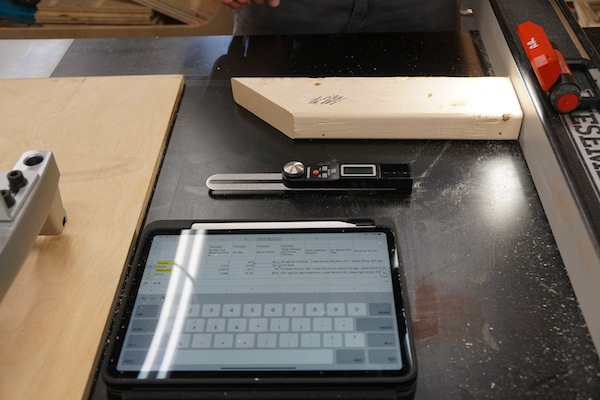
45-Degree Miter – Cutting 45-degree miters is a critical function of these types of miter saws. We measured the factory 45-degree cuts by setting the saw to its 45-degree setting. We made a cut into 2×4 lumber and read the actual cut with a digital T-Bevel gauge. For each cut, we zeroed the gauge. Then we took the reading and recorded the data. This type of gauge is accurate to one-tenth of a degree.
90-Degree Cross Cut – For this test, we set the saw to the factory 90-degree setting for a cross-cut. We crosscut a piece of plywood that had one edge squared with a track saw. We took the ‘cut-off’ piece and flipped it 180 degrees along the long axis. We lined up the two pieces against a straight edge and noted if there were a gap between the two halves along the cut edge. If we saw a gap, we measured this gap with feeler gauges. Flipping one of the pieces 180 degrees, meant that any deviation from a 90-degree cut would show twice the error than just measuring one side by itself.
Miter Saw Performance
For the performance section, we tested the run-time and speed of cut with the battery sold with the saw in a kitted form.
Power Test – Winner Makita
| LVL Speed Test | Time | Rank |
| Makita 7-1/2" | 2.0 | 1 |
| Kobalt | 2.2 | 2 |
| Metabo HPT | 2.7 | 3 |
| DEWALT | 2.8 | 4 |
| Milwaukee | 3.6 | 5 |
| Bosch | 4.2 | 6 |
| Craftsman | 4.7 | 7 |
The Power Test is a good indication of what the saw and blade configuration can cut. We made five timed cuts in 7-1/4″ LVL lumber and recorded the average time. This is a simple test with some uncontrolled variables, but our methods were fair.
We had the same operator conduct each cut, with the instruction to let the saw do the cutting, apply as much pressure as the saw and blade would allow. We waited for the blade to come to a complete stop, indexed the material, and then started a fresh cut. Time was started from the time the blade hit the wood till it exited out the back of the LVL and completed the cut. We timed 5 cuts per saw and took the average time.
The Makita crushed this test coming in at 2.0 seconds, with the Kobalt coming in second at 2.2 seconds per cut, followed by Metabo HPT in third at 2.7 seconds.
Run-time Test – Winner Makita
For the run-time test, we made repetitive cuts in KD lumber until the battery was exhausted or thermal overload prevented further cutting. Operators were instructed to start the saw and bring it up to speed. Bring the saw forward, make the cut, wait for the blade to stop, reset, and repeat.
| Run-time Test | # Cuts | Rank |
| Makita | 328 | 1 |
| Kobalt | 252 | 2 |
| Bosch | 248 | 3 |
| Metabo HPT | 185 | 4 |
| Milwaukee | 182 | 5 |
| Craftsman | 174 | 6 |
| DEWALT | 154 | 7 |
Makita with its dual battery system crushed this test with 328 cuts. Bosch and Kobalt also shined in this test, with 248 and 252 cuts respectively, cutting 60+ more cuts than the fourth-place Metabo HPT. No thermal overloads were encountered. Note, for the overall calculation of the best miter saw we are NOT using this run-time test, we use the normalized ranking that accounts for total battery pack energy (watt-hrs) listed below.
Run-time Normalization by Watt-hours – Winner Craftsman
Each of these saws came with a different sized “energy power plant” or battery configuration. As you can imagine, the saw with the greatest watt-hr battery theoretically has a leg up on its competition for run-time cuts. Whenever we do a cordless tool comparison, we level the playing field by taking the results and dividing the results by the number of watt-hr for the particular saws’ battery.
| # Cuts | Watt-Hr | Cuts/Watt-hr | Rank | |
| Craftsman | 174 | 72 | 2.42 | 1 |
| DEWALT | 154 | 72 | 2.14 | 2 |
| Metabo HPT | 185 | 90 | 2.06 | 3 |
| Milwaukee | 182 | 90 | 2.02 | 4 |
| Kobalt | 252 | 129.6 | 1.94 | 5 |
| Makita | 328 | 180 | 1.82 | 6 |
| Bosch | 248 | 144 | 1.72 | 7 |
In this H2H, the batteries varied both in voltage and amp-hrs. We derive watt-hrs by multiplying the load voltage by the amp-hours. The following table shows the results of the run-time test when normalized for the battery pack watt-hours.
After running the calculations, Craftsman came in first with 2.4 cuts per watt-hour, followed by DEWALT and Metabo HPT with 2.1 cuts/watt-hr, and third place was Milwaukee with 2.0 cuts/watt-hr. This test allows us to see who has the most effective combination of battery technology, stamina, and motor power on a per watt-hr basis.
Compact Miter Saw Features – Winner – Milwaukee
Comparing tools from multiple brands is never easy but the devil can live in the details at times so a comparison is certainly warranted.
We looked at the following 10 features and ranked them 1-5.
- Laser light
- Max Angle
- Max Bevel
- Dust port
- Outriggers
- Forward Slide / Compact
- Capacity
- Blade Brake
- Blade Guard Operation
- Dado Cut
| Milwaukee | Metabo HPT | Kobalt | Makita | Bosch | Craftsman | DEWALT | |
| Laser Light | 1 | 5 | 3 | 6 | 3 | 1 | 1 |
| Max Angle | 2 | 1 | 2 | 1 | 4 | 4 | 4 |
| Max Bevel | 1 | 3 | 1 | 3 | 3 | 5 | 5 |
| Dust port | 1 | 6 | 3 | 3 | 2 | 3 | 3 |
| Outriggers | 3 | 1 | 3 | 2 | 2 | 3 | 3 |
| Fwd Slide | 2 | 1 | 4 | 3 | 6 | 2 | 4 |
| Blade Brake | 2 | 1 | 2 | 2 | 4 | 5 | 6 |
| 2-way Bevel | 1 | 1 | 1 | 4 | 4 | 4 | 4 |
| Cut Capacity | 5 | 1 | 3 | 1 | 2 | 4 | 4 |
| Blade Guard | 3 | 2 | 6 | 3 | 1 | 3 | 3 |
| Dado Cut | 5 | 1 | 4 | 2 | 2 | 3 | 5 |
| Total | 21 | 22 | 28 | 28 | 31 | 34 | 37 |
| Rank | 1 | 2 | 3 | 3 | 4 | 5 | 6 |
Notable Compact Miter Saw Features
Laser vs. LED Shadow Light – The Bosch and Metabo HPT miter saws both have a built-in laser that indicates one side of the blade. This laser also has a separate on/off switch. The laser displays the line-of-cut with the tool turned off and the blade not spinning, which we liked for lining up cuts.
On the Metabo HPT, the laser disappears as the saw approached the material. This is because the rubber dust shroud blocks the laser.
In general, the TBB Crew is not a fan of lasers and prefers the blade shadow light option similar to the Craftsman, Kobalt and Milwaukee saw. This shadow light marks the blade in ANY lighting situation, and unlike a laser, never has to be calibrated since it casts a shadow of any blade mounted on the saw onto the workpiece. It’s foolproof.
AC / DC Option – The Metabo HPT is the only miter saw of these three with the capability to run on battery or corded power. Metabo HPT accomplishes this with a battery pack adapter with a 20-foot cord and “brick-like” inverter.
Forward Rail Design – We found the Metabo HPT forward rail design to operate smoothly. The forward rails also take up significantly less space behind the saw. This takes up less room in the shop or on the job site. If you have a small shop or work in cramped spaces regularly this feature can open up a lot of floor space. Makita uses a 4-Steel Rail Sliding System increases rigidity to the saw head, producing accurate cutting.
We were impressed that all of these were precise and had little to no slop in the saw head.
Ergonomics – Winner – Bosch and Milwaukee
The ergonomics evaluation in this section is purely subjective and based on the opinions of the testing crew. After a full day of running performance tests, the team spent several hours in the shop testing and ranking the saws in seven [6] categories including:
- Switch
- Grip
- Miter Adjustment
- Bevel Adjustments
- Fence Adjustment
- Transport / Balance
We weighed each saw, and carried the saws upstairs, through doorways, transported one-handed to open doors or gates, and loaded/unloaded the saw into a work vehicle. Depending on the primary application of your miter saw needs, transportation is a major part of the day to day considerations you’ll want to take into account before committing to a new saw.
| Weight | Lbs. | Rank |
| Craftsman | 21.0 | 1 |
| Milwaukee | 28.0 | 2 |
| Makita 7-1/2" | 28.9 | 3 |
| Kobalt | 31.0 | 4 |
| Bosch | 31.5 | 5 |
| DEWALT | 31.6 | 6 |
| Metabo HPT | 34.0 | 7 |
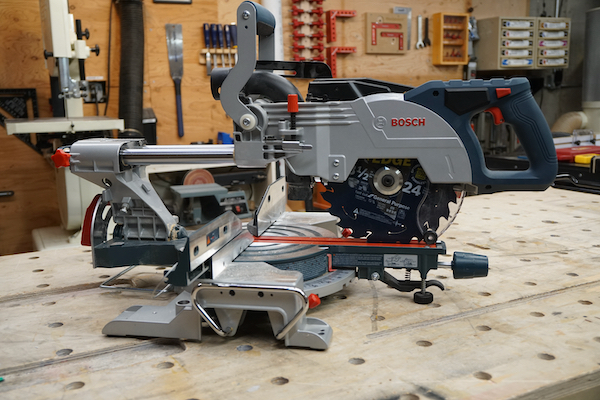
Bosch and Milwaukee took the ergonomics section with a score of 17-points. Metabo HPT came in second with 19-points.
| Bosch | Milwaukee | Metabo HPT | Makita | DEWALT | Craftsman | Kobalt | |
| Ambidextrous Switch | 1 | 3 | 2 | 1 | 5 | 5 | 4 |
| Grip | 1 | 3 | 2 | 1 | 4 | 5 | 4 |
| Miter Angle Adj. | 3 | 1 | 2 | 3 | 2 | 4 | 5 |
| Bevel Angle Adj. | 2 | 4 | 1 | 3 | 3 | 3 | 5 |
| Fence Adj. | 2 | 3 | 1 | 5 | 5 | 5 | 4 |
| Mobility | 3 | 1 | 4 | 4 | 2 | 5 | 2 |
| Weight | 5 | 2 | 7 | 3 | 6 | 1 | 4 |
| Total | 17 | 17 | 19 | 20 | 27 | 28 | 28 |
| Rank | 1 | 1 | 2 | 3 | 4 | 5 | 5 |
The team was impressed with the third-place Metabo HPT’s manufacturing quality. Its design is precise, modern, and well made. The Bosch on the other hand is a venerable 10-year old design that still holds its own. The team would like to see Bosch re-design the top handle because of its tendency to pinch your hand when transporting.
The Craftsman was the lightest saw of the group, but not having a top handle hurt its score. Milwaukee and Kobalt hit the sweet spots for ease of transport with two side table handles, and a well-placed top handle.
The DEWALT has an oversized bevel scale that makes bevel angle adjustments accurate and easy. The compact, lightweight design (31.6 bs.) allows for easy transport and storage. It has a cam lock miter handle that was easy to maneuver and delivers quick and accurate miter angles.
Dust Collection – Winner –Makita
From carpenters working in finished spaces, to shop workers who want to reduce the amount of airborne dust in their environment, knowing how well a saw will integrate with a vacuum is an important measure of performance for any user.
We conducted a dust collection test by performing 25 cuts on a 2×6 piece of KD lumber and measuring the volume of wood dust collected by the vacuum. Additionally, we assessed the buildup of dust that didn’t make it into the vacuum but accumulated on the table and fence of the tool. The result of the dust collection test are depicted in the table below:
| SawDust | Weight oz. | Rank |
| Makita 7-1/2" | 8.9 | 1 |
| Bosch | 7.9 | 2 |
| Kobalt | 7.9 | 2 |
| Milwaukee | 7.5 | 3 |
| Craftsman | 7.1 | 4 |
| Metabo HPT | 6.6 | 5 |
| DEWALT | 5.6 | 6 |
Makita took first place by capturing 8.9 ounces of dust, followed by a tie between Bosch and Kobalt with 7.9 ounces of sawdust, and Milwaukee came in third with 7.5 ounces.
The DEWALT performed poorly on dust collection. The reason for this was that the dust chutes rubber flaps [behind the saw blade] collapsed when the dust extractor was turned on. While the easy field modification is to cut or remove these flaps – this really should be addressed by DEWALT.
Decibels – Winner Kobalt
These days more and more contractors are taking better care of their hearing. OSHA allows 8 hours of exposure for up to 90 dB, for exposures 95dB and greater, the exposure limits drop dramatically. So clearly these saws all need hearing protection. The quietest saw was the Kobalt with 84 decibels followed closely by Metabo HPT with 84.4 decibels. Third place went to the Bosch at 84.7 decibels.
| Noise | db | Rank |
| Kobalt | 84.0 | 1 |
| Metabo HPT | 84.4 | 2 |
| Bosch | 84.7 | 3 |
| Craftsman | 85.7 | 4 |
| DEWALT | 87.9 | 5 |
| Milwaukee | 89.8 | 6 |
| Makita 7-1/2" | 90.3 | 7 |
Compact Miter Saw Pricing – Winner Craftman
| Mfgr. | Price Kit | Notes | Rank |
| Craftsman | $249 | Kit | 1 |
| DEWALT | $369 | Kit | 2 |
| Kobalt | $412 | Tool, Bat, Chrg | 3 |
| Milwaukee | $549 | Kit | 4 |
| Bosch | $599 | Kit | 5 |
| Makita 7 1/2" | $828 | Tool, Bats, Chrg | 6 |
| Metabo HPT' | $1,168 | Tool, Bat, Chrg | 7 |
Above we’ve included the current pricing (at the time of publication). Pricing is based on kits where available. For the Kobalt, Makita, and Metabo HPT we used bare tool pricing plus pricing to buy a battery(s) and charger as those are only sold as bare tools.
The best-priced compact sliding miter saw was the Craftsman at $249. Second place is the DEWALT at $369 followed by Kobalt at $412. The Metabo HPT was the highest priced saw coming in at $1,168. This is the only saw with AC/DC capability so that’s something to consider.
Buy Now From Our Sponsored Retailers
Other Options
To the surprise of the Tool Box Buzz Crew, this test resulted in a winner, a tie and a triple tie, something we haven’t seen before. The Kobalt took first place with 27-points and Craftsman and Milwaukee tied for second with 28-points.
The Tool Box Buzz crew has to give hats off to the Kobalt, it was an excellent performer with some nicely thought out features. While the team recognizes that Kobalt is not considered by most to be a PRO brand, it performed well and the numbers speak to that. The Kobalt saw surprised the crew with its impressive run-time. It scored tops in the run-time testing, decibels and price. It took second place in dust collection and the LVL power test and had a solid 3rd place showing in features.
Craftsman was also a surprise to the team. The Craftsman crushed three categories: accuracy, run-time, and price which catapulted it to the 2nd place [tie] spot. Milwaukee was certainly not a surprise as it is a solid pro-level saw and excelled in features, smart ergonomics, dust collection, and run-time.
Bosch, Makita and Metabo HPT tied for third place with 30 points. The Bosch saw also excelled in ergonomics, accuracy, dust collection, and did well in decibel testing, the LVL test, run-time and price brought down its score. Makita placed either second or third in almost every category, scoring well in many categories with decibels, run-time, and price hurting its placement. Metabo HPT was in a similar situation with accuracy, dust collection, and price affecting it’s placement.
The biggest disappointment of the test was the DEWALT. It scored second in price and run-time. All other categories were much higher. This saw is in need of a Gen 2 upgrade.
Makita, Bosch, and Milwaukee scored one-point apart from each other. These three saws, along with the DEWALT, are the saws we see on the job sites the most. They are tried and true saw designs.
| OVERALL WINNER | Kobalt | Craftsman | Milwaukee | Bosch | Makita | Metabo HPT | DEWALT |
| SawDust Wt | 2 | 4 | 3 | 2 | 1 | 5 | 6 |
| dB | 1 | 4 | 6 | 3 | 7 | 2 | 5 |
| Accuracy / Prec. | 6 | 1 | 4 | 2 | 3 | 6 | 5 |
| LVL Speed Test | 2 | 7 | 5 | 6 | 1 | 3 | 4 |
| Run-time Norm. | 5 | 1 | 4 | 7 | 6 | 3 | 2 |
| Features | 3 | 5 | 1 | 4 | 3 | 2 | 6 |
| Ergonomics | 5 | 5 | 1 | 1 | 3 | 2 | 4 |
| Price | 3 | 1 | 4 | 5 | 6 | 7 | 2 |
| Total | 27 | 28 | 28 | 30 | 30 | 30 | 34 |
| Rank | 1 | 2 | 2 | 3 | 3 | 3 | 4 |
Tool Box Buzz Crew Picks
If the team had to pick a saw they unanimously picked the time-tested Bosch or Makita design, and all agreed that the Milwaukee saw was a tool that most PROS would gravitate to. If the team was playing with company money and could buy any saw, then the Metabo HPT would be in that mix. This is probably a good time to mention that the Metabo HPT miter saw is a well thought-out, precise, and nicely engineered tool. Its $1,200 price tag severely hurt it’s ranking in this test and will prohibit most people from considering it as a purchase.
DEWALT is by far the most common miter saw on job sites. And this little slider is exactly what you expect from a DEWALT saw. But a second-generation upgrade with a brushless motor, better accuracy, and dust collection would help this saw shine.
Best Compact Sliding Miter Saw – Best Value – Craftsman
The best value is the Craftsman saw. This saw tied for second place in the overall testing and is the lowest priced saw at $249. If you looking for a solid performer at a good price – this is your saw.
The MOST Comprehensive Information Available
Our ALL Pro contractor team put some serious time and effort into our Best Compact Sliding Miter Saw Head-to-Head evaluation to bring you the most comprehensive information available.
These tests and evaluations are very difficult, take a lot of time, and ultimately limited in scope as we’re not a professional testing company and we’ve got limited time to evaluate the tools. We cannot do long-term testing that would shed light on durability and we can’t possibly test every application that you might use one of these saws for.
We get lots of comments about how we make the final rankings. As we’ve stated, there are hundreds of ways to compare tools. The good news is we’ve openly shared ALL the data from our tests, and you can rank the tools however you want. Don’t care about an item we ranked? No problem. Simply remove that from the matrix above and re-rank them. Hopefully, you’ll find this Head-To-Head useful when comparing compact cordless miter saws.
If you have a moment, please check out our other Head-to-Head Tests.
Best Compact Sliding Miter Saw Video Review
About the author
12 Comments
Leave a comment
Disclosure
Product reviews on this site contain our opinion of a product or service. We will always strive for objectivity and transparency in our reviews. Our goal is to provide readers with honest, objective information based on our own experiences. We never have and never will accept payment in exchange for a positive review. Many of the products that we review are provided to us for free by a manufacturer or retailer. In some cases, we also have advertising or affiliate relationships with manufacturers and retailers of products and services we review. For additional information please visit our additional disclosure policies.











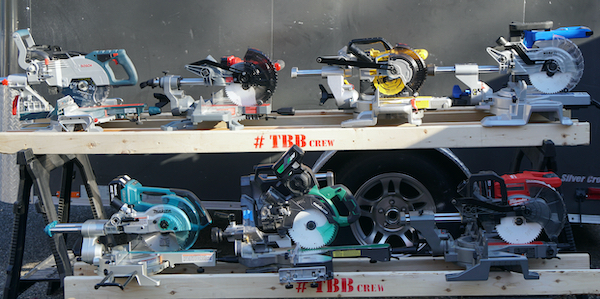
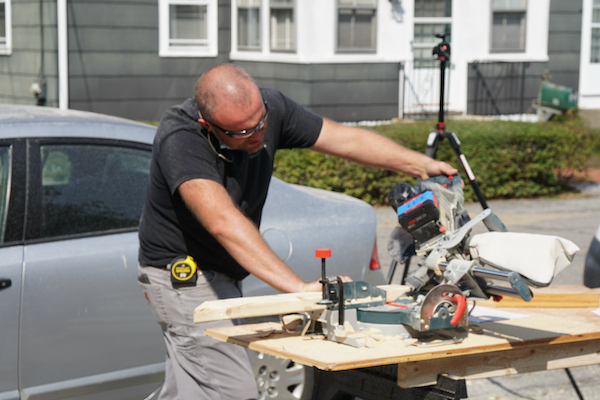
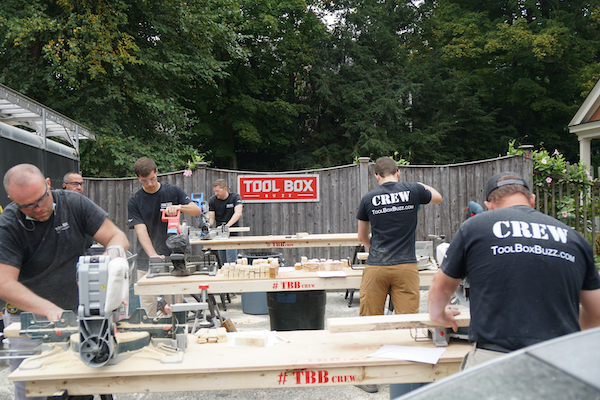
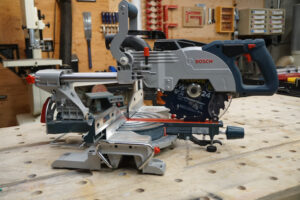
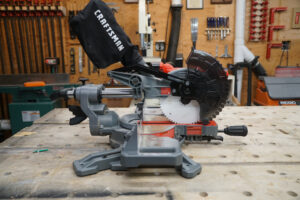
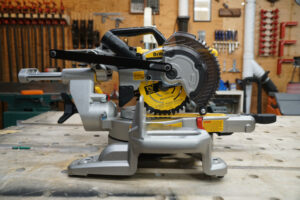
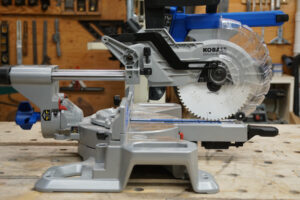
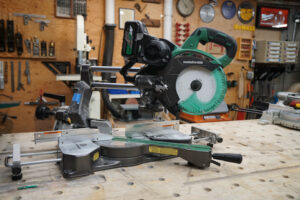
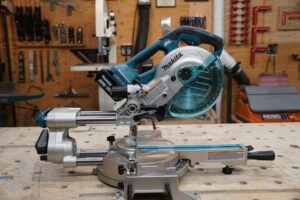
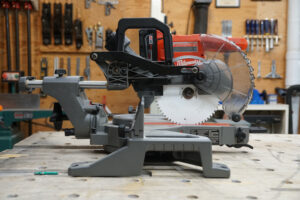
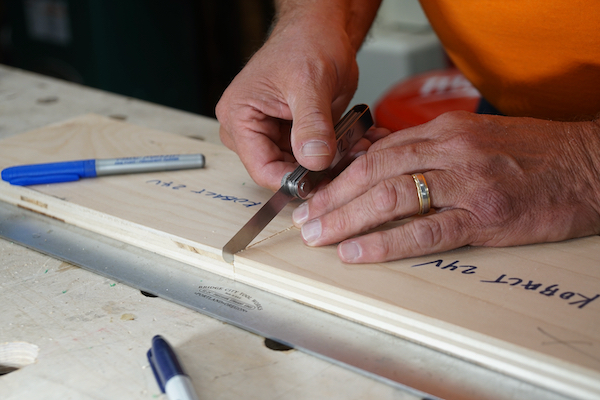
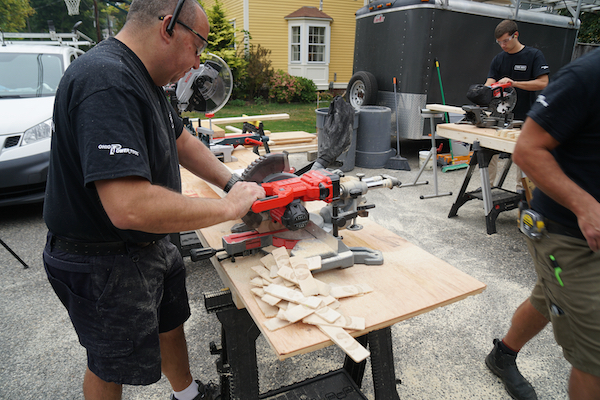
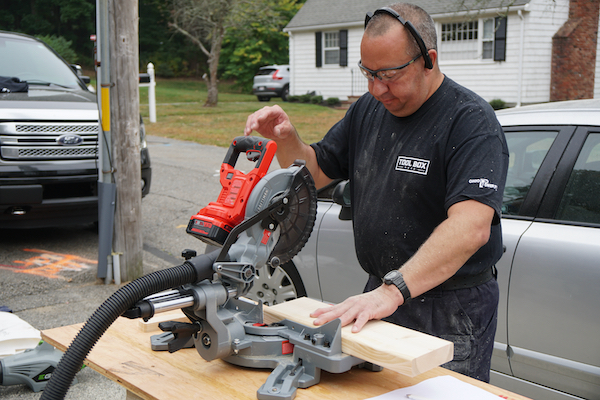
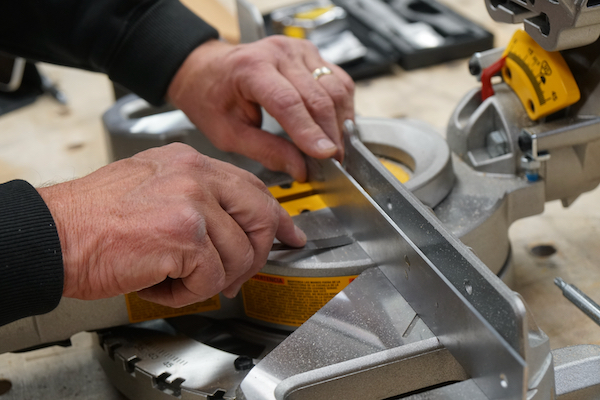
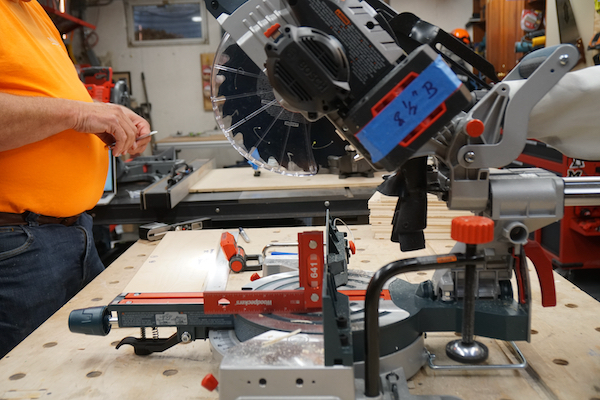
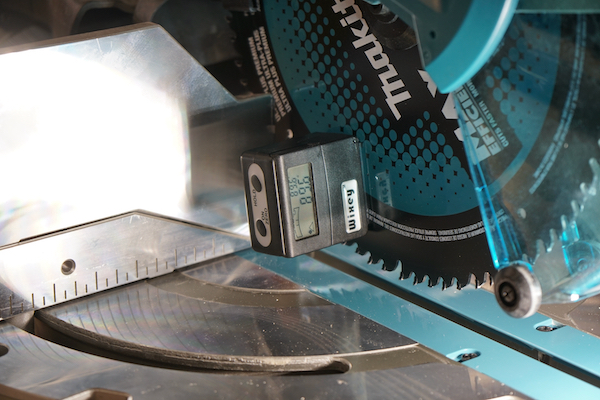
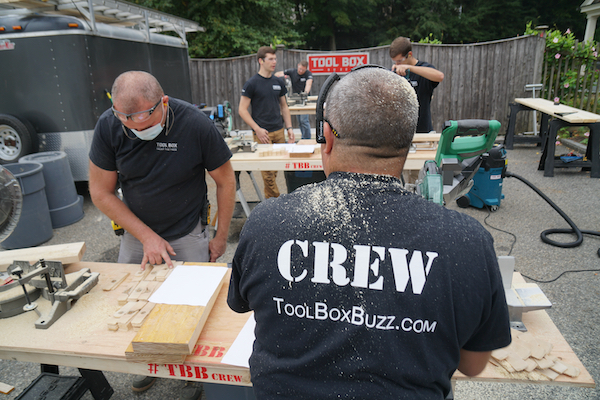
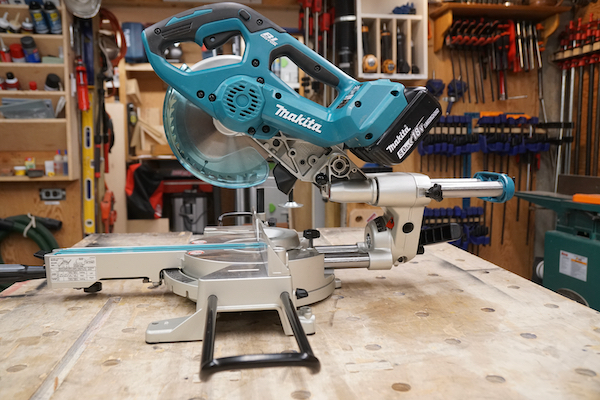
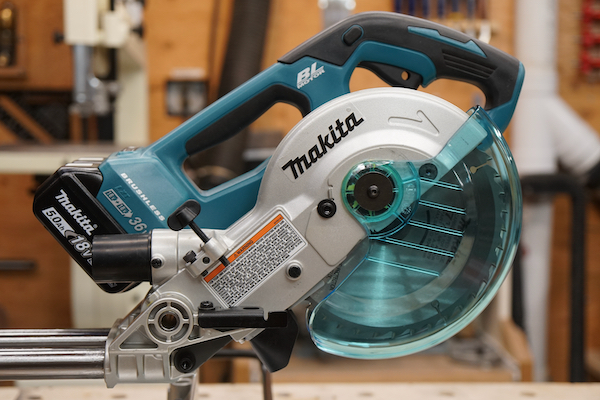
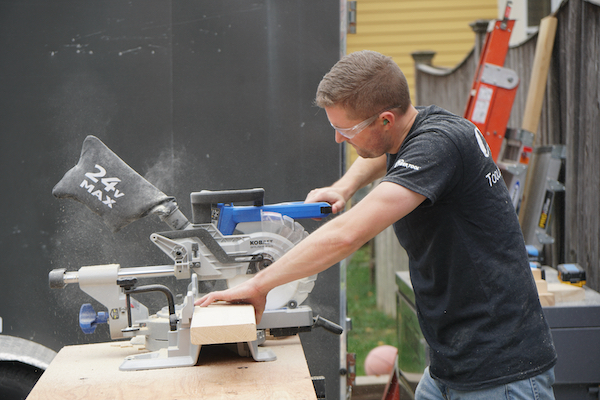
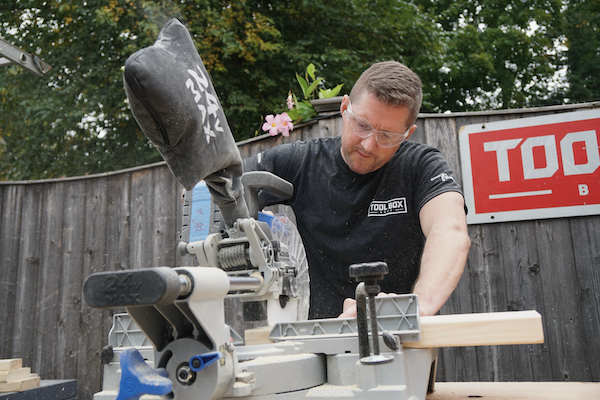
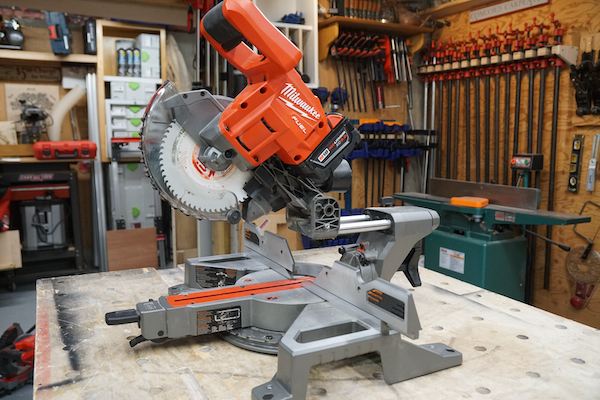
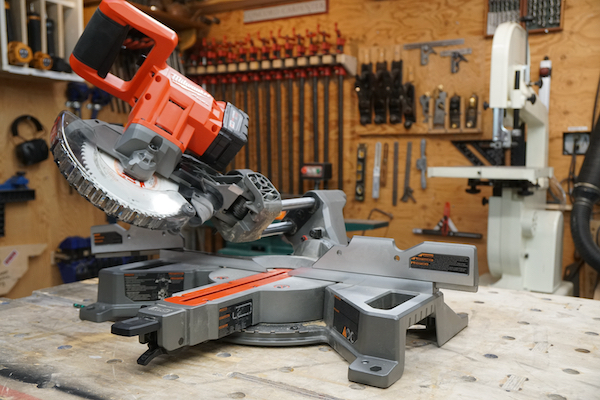
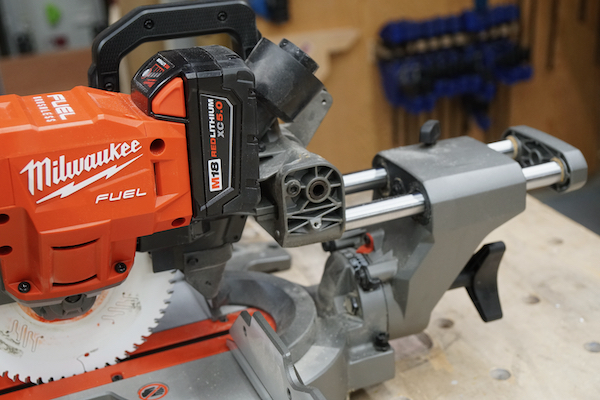
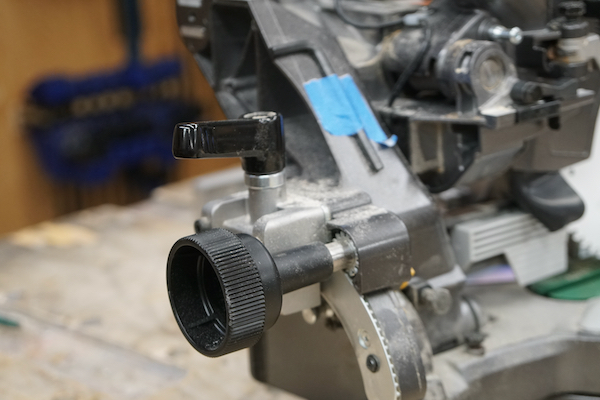
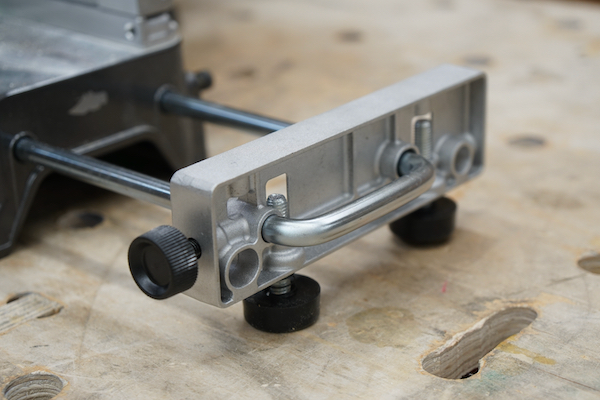
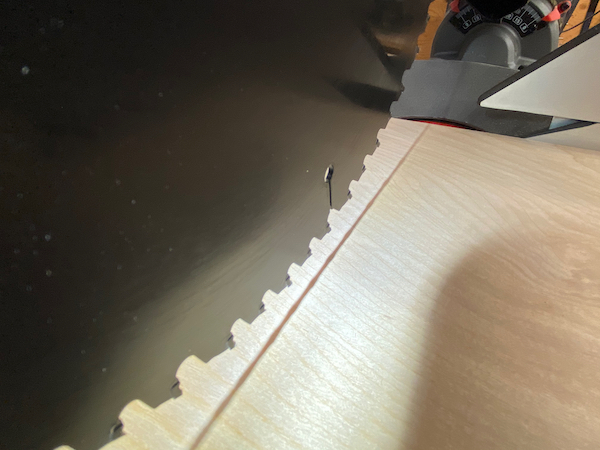
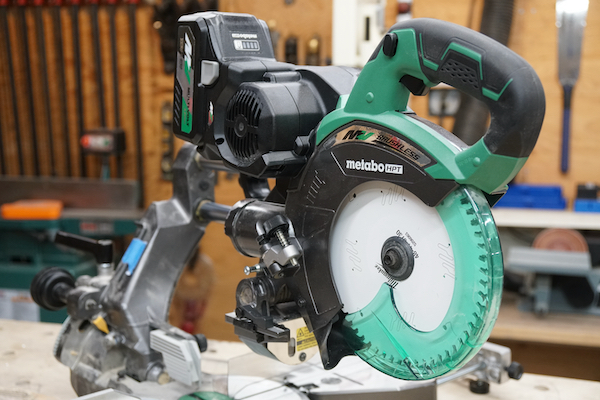
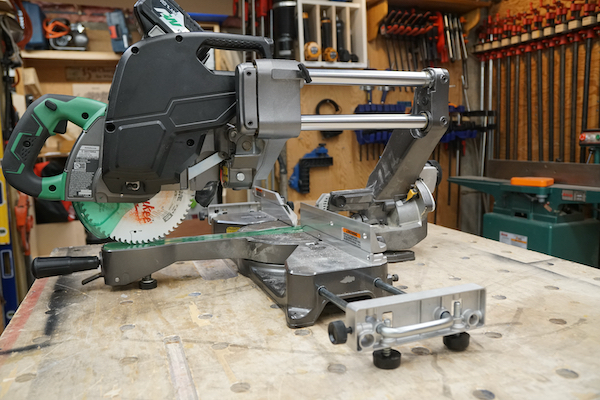
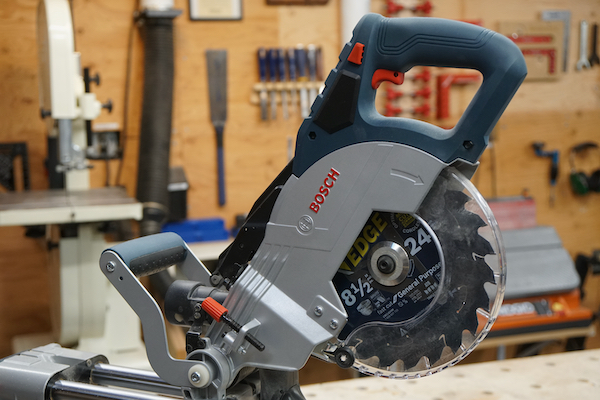
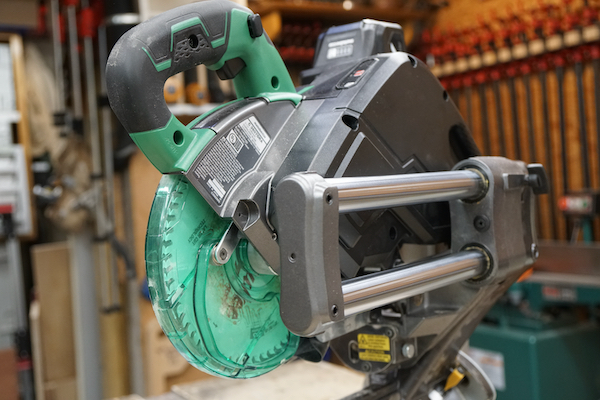
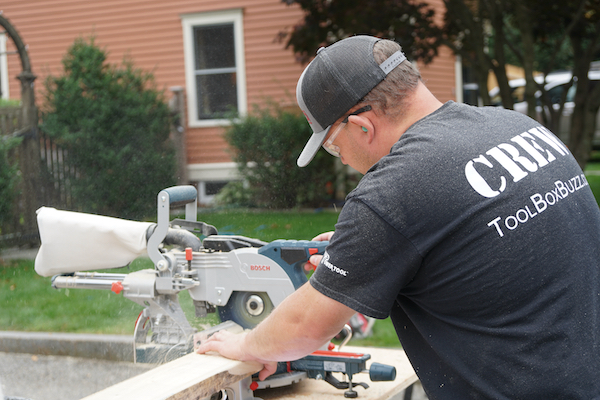
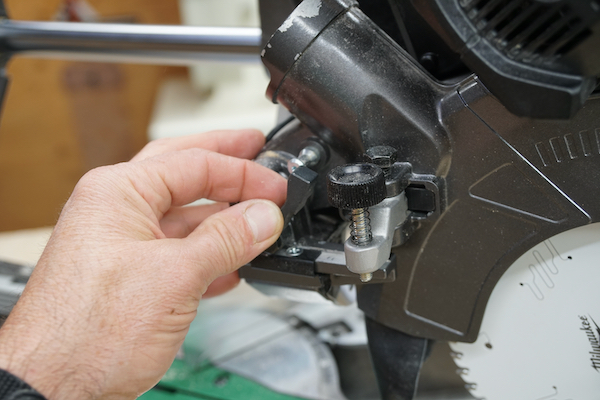
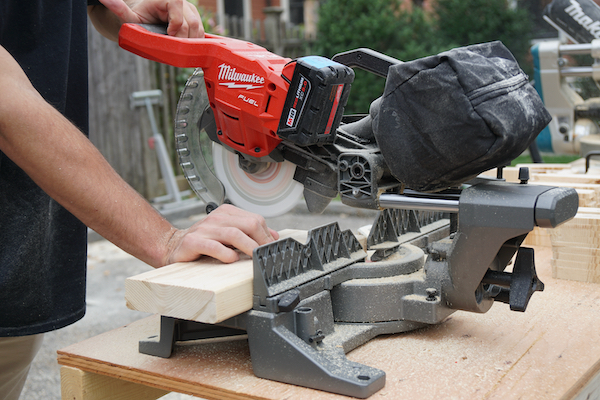
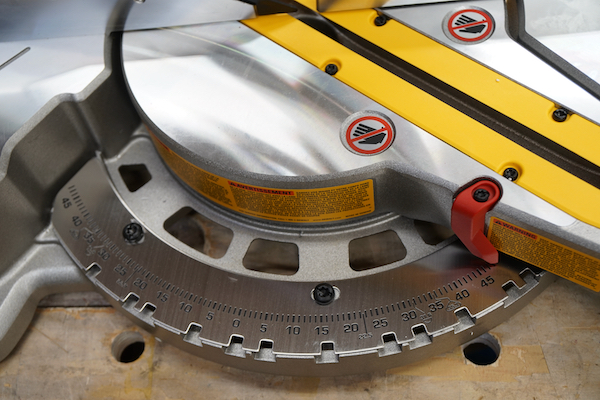
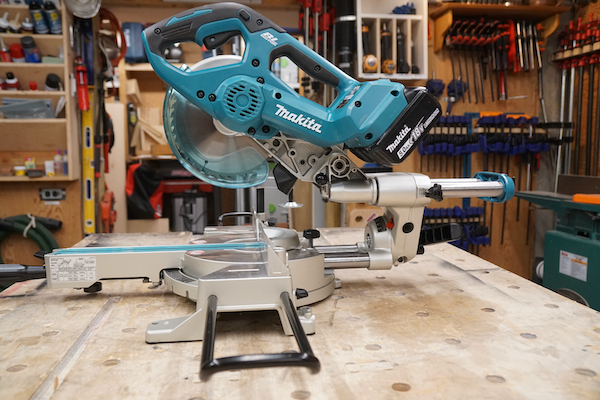
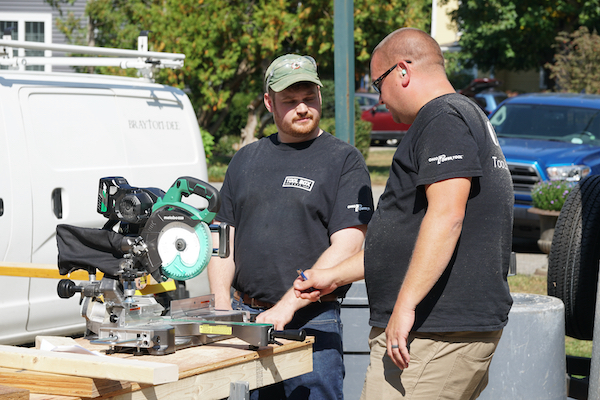
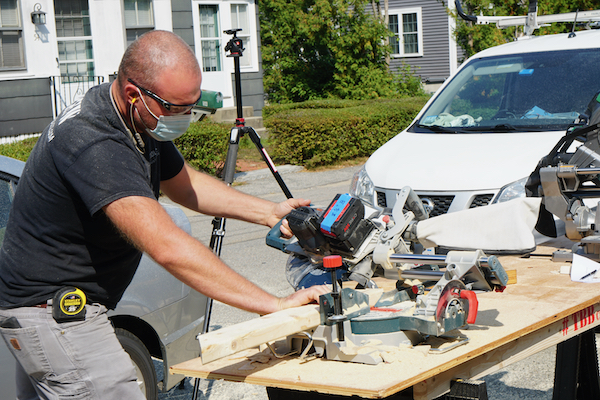
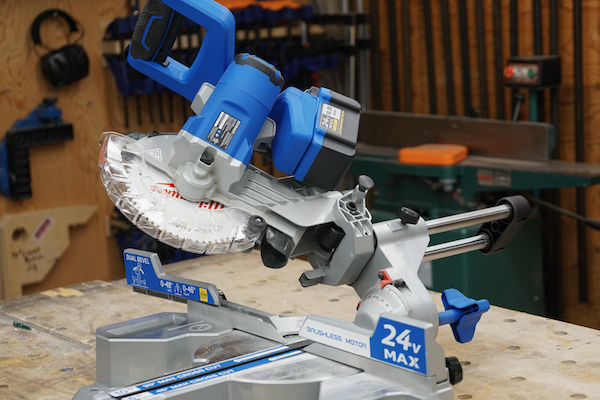
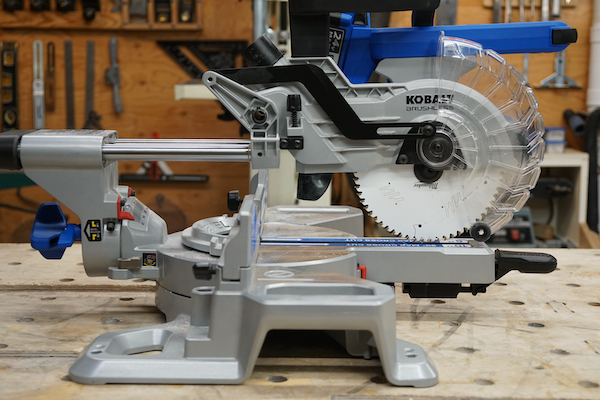
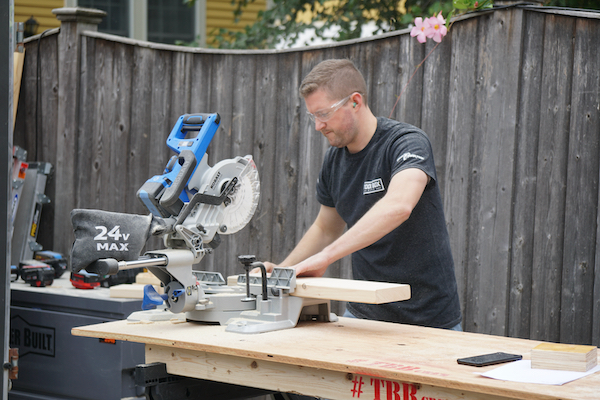
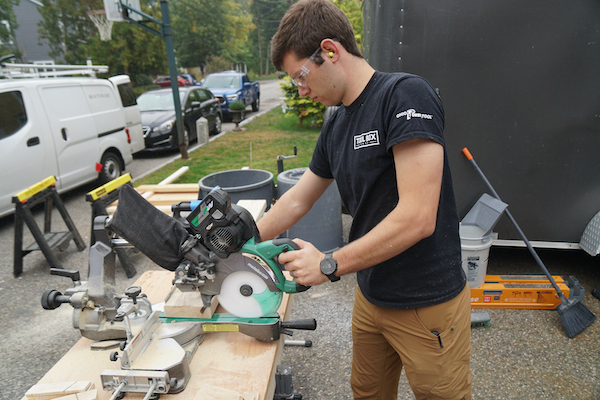
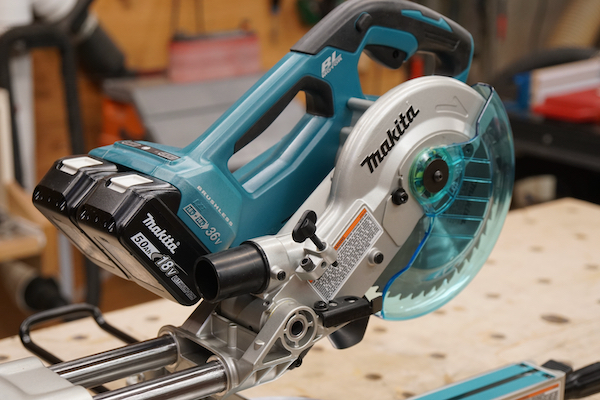
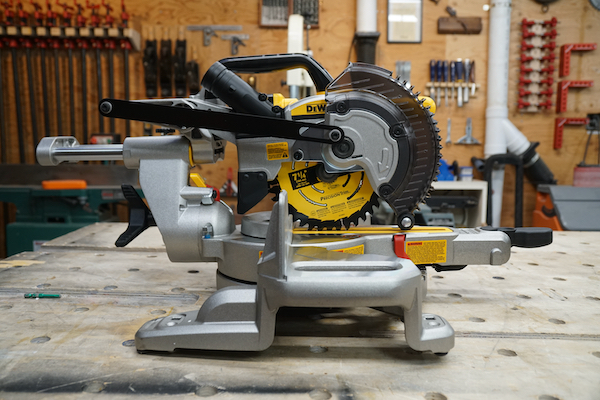
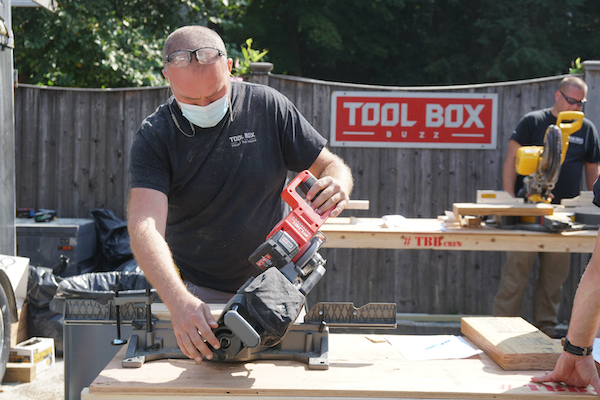
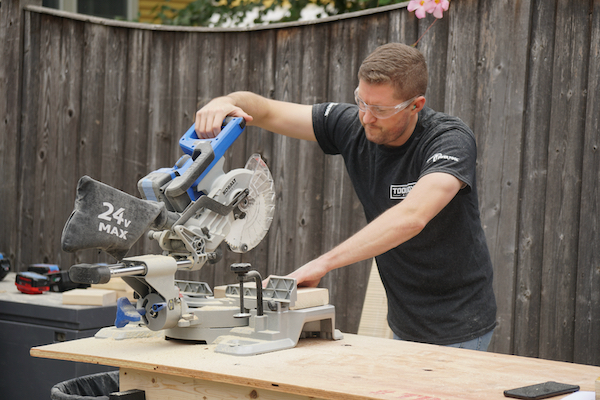
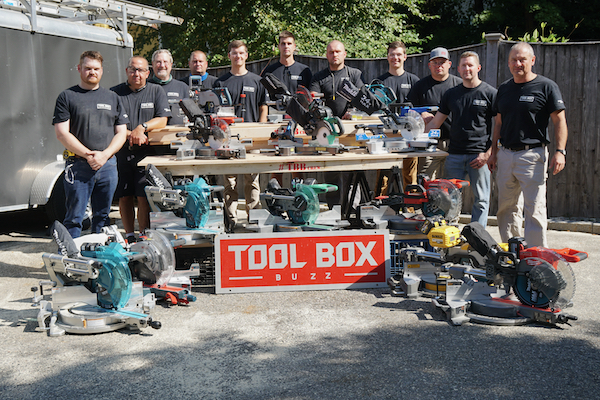












I have the dewalt and I really like it. Other than dust collection I have no issues. I thought about the Milwaukee but it is about $200 more.
The battery test is not really an issue. I trimmed a whole house with my Dewalt and a 4ah battery and still had half left.
I had originally purchased the craftsman, everything about it screams dewalt bargain bin, like a cheap harbor freight knockoff. I had it about an hour before I returned it. It wouldn’t cut a 2×4 with the fully charged battery. It was probably defective but didn’t care.
Great write up.
It’s a solid saw that has proven itself on the job site
May I, first of all, express my gratitude to Rob in person and to the whole family of professionals of the ToolBoxBuzz in general. I personally highly appreciate your time and effort in putting all the specs and details of saws together. This is such a nice and good thing to do on your side. Thank you for performing basic cuts and testing the features of each individual unit. Nice to hear about the ergonomics and mobility of the reported items. Glad to hear the opinion of the professionals considering just a saw as a unit and not factoring price. This is important when considering purchasing saw as a long term investment. Therefore, it would be nice to have information regarding the warranty and service available on the reported items. I would love to hear about the simplicity of calibration and how it kept during the test. I cannot thank you all enough for the great work.
Steven – Lots of guys ask about about the warranties and how they compare. I even tried once to do a “head to head” on warranties, most of the companies laughed at me. Why? Because you need a PHD to even begin to compare them, all the exclusions, different tools fall into different categories, it’s just too complicated. Wish we could, but it’s just not in the cards.
I didn’t have all this information when I bought my Milwaukee 7 inch, but I still made the right choice in the long run. I wanted to try the Metabo specifically because of the AC option, but no one had them in stock and that price is stupid. The Bosch was an 8 inch blade and that killed it for me. I own Bosch batteries and would have loved to use those on the saw. The Kobalt and the Craftsman were nice little saws, but the slide bars sounded gritty and weren’t as smooth as my 780. The Makita I loved, but it was the 2 battery thing that got me. We bought the 10 inch to rebuild my parent’s house after Irma and I loved that saw, but the dual batteries was a pain. Milwaukee already had a head up with me since I had a 6 and 9 ah battery. The Dewalt single bevel was a deal breaker even though I love my 780. Like I said, the Kobalt was just the rails sounding gritty and my worry that their batteries will vanish soon since Lowes seems to be pushing them aside.
I was hoping to see the Kobalt score higher on accuracy. With its dual bevel and solid build, it looked strong.
Do the testers think the accuracy or lack of would be a deal-breaker in a high-end trim work. Is it capable of performing precise work or not?
The sound would also have been a plus in the same setting.
Hats off to the team for the time, effort and brute diligence required to do all these assessments.
Thank you.
I have the Dewalt for obvious reaasons – I have DeWalt batteries. But that said it has never disappointed me.
Thanks so much for doing these reviews – very helpful and educational. You guys clearly make a great effort and it’s appreciated!
Quick question: You mention the accuracy rankings are based on out-of-the-box measurements. How did these change once you squared up the saws? Which were the easiest to adjust?
A bigger question: Is any sliding compound miter saw a precision instrument? It seems that – with the exception of the kapex – no saw is accurate enough for stain-grade work.
Doug – You’re very welcome and glad you find our content useful. Unless otherwise noted, each of them was adjusted to a satisfactory accuracy, and most were fairly straight forward. But your second question really hits the real issue, when we need to cut something extremely precise, most of us will turn to another solution, typically a cabinet saw. But most of these can be adjusted to handle even stain grade work with a little time and patience in the setup.
Hello does the milwaukee have a dept of cut feature for dado cuts??????
Thank You Michael
yes
Wow. This is surreal. My first miter box was a Miller Falls. Flexvolt table saw, Milwaukee cordless nailers and everything else Makita.
This Makita miter saw needs to be full dual-bevel.
THE most important thing is to be able to make the trim money cuts.
$50 dollar blades for the 7 1/2 inch Makita. You have to be a professional to dedicate yourself to Makita tools. High as giraffe eyeballs.
Money cut Makita.